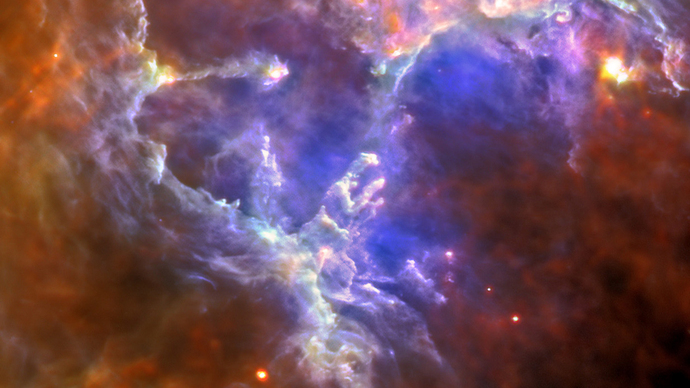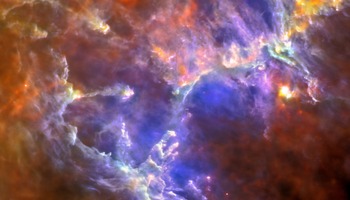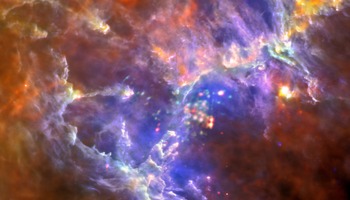
Revisiting the 'Pillars of Creation'
Feature • January 18, 2012
In 1995, NASA's Hubble Space Telescope took an iconic image of the Eagle nebula, dubbed the "Pillars of Creation," highlighting its finger-like pillars where new stars are thought to be forming. Now, the Herschel Space Observatory has a new, expansive view of the region captured in longer-wavelength infrared light.
The Herschel mission is led by the European Space Agency, with important NASA contributions.
The Eagle nebula is 6,500 light-years away in the constellation of Serpens. It contains a young, hot star cluster, NGC6611, visible with modest backyard telescopes, which is sculpting and illuminating the surrounding gas and dust. The result is a huge, hollowed-out cavity and pillars, each several light-years long.
The new Herschel image shows the pillars and the wide field of gas and dust around them. Captured in far-infrared wavelengths, the image allows astronomers to see inside the pillars and structures in the region. Herschel's image also makes it possible to search for young stars over a much wider region, and come to a much fuller understanding of the creative and destructive forces inside the Eagle nebula.
Read the European Space Agency story at http://www.esa.int/SPECIALS/Herschel/SEMG4NMXDXG_0.html#subhead5.
Herschel is a European Space Agency cornerstone mission, with science instruments provided by consortia of European institutes and with important participation by NASA. NASA's Herschel Project Office is based at NASA's Jet Propulsion Laboratory, Pasadena, Calif. JPL contributed mission-enabling technology for two of Herschel's three science instruments. The NASA Herschel Science Center, part of the Infrared Processing and Analysis Center at the California Institute of Technology in Pasadena, supports the United States astronomical community. Caltech manages JPL for NASA.









